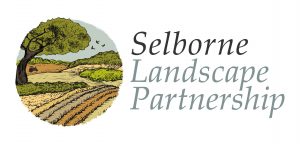Selborne Landscape Partnership
The Selborne Landscape Partnership (SLP) is a cluster of farmers and conservationists working together to restore nature across the countryside that was home to Gilbert White, the pioneering ecologist and Jane Austen, the writer.
 The SLP’s 29 members manage an area in excess of 6,500ha (16,000 acres). Integral to their productive farming and food production is a joined-up approach to farmland conservation.
The SLP’s 29 members manage an area in excess of 6,500ha (16,000 acres). Integral to their productive farming and food production is a joined-up approach to farmland conservation.
The group’s aims are:
- Coordinated planning of wildlife conservation across the Partnership
- Spread of species from wildlife sites into surrounding farmed landscapes, to encourage wider species dispersal and build population resilience
- A network of wildlife corridors to link existing wildlife rich sites
- Coordinated habitat creation across the Partnership for pollinators, farmland birds, small mammals, amphibians and reptiles
- Management and connection of ponds
- Soil and water conservation
- Sharing of knowledge and expertise
- Links with the local community
In its early days the SLP members selected a number of flagship species on which to focus their conservation efforts. Species include:
- Harvest mouse
- Barn owl
- Lapwing
- Duke of Burgundy butterfly
- Frogs and toads
The SLP has had tremendous support from local naturalists who have volunteered their time and expertise to help set up a wildlife survey and monitoring programme. Using standardised survey protocols approximately 10,000 survey records have been gathered, covering a variety of species including birds, butterflies, mammals and amphibians. We are hugely grateful for the commitment and on-going support of our local volunteers without whom this simply would not have been possible. The data collected now forms the basis of a report ‘Farming in Partnership with Nature – A New Natural History of Selborne’.
By understanding the needs of key target species, a mosaic of nature-rich areas is being retained, restored and enhanced to provide year-round food and homes for wildlife using a variety of conservation methods. For example:
- Hedgerow restoration and rotational management
- Establishment of tussocky field edges
- Planting seed mixes for winter bird feed
- Planting flower-rich areas for insects
- Restoration and management of ponds
- Woodland management
We are convinced that a collaborative and mutually supportive landscape-scale approach to nature conservation across the Selborne Landscape Partnership’s area will deliver what we’re seeking — a diverse and vibrant wildlife population in a thriving farmed landscape.
